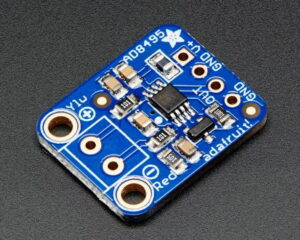Aux input setup
The newest version of YourDyno uses a screw type connector. It is clearly marked with 0V and Signal, and connecting the sensor is straight forward.
The previous versions of YourDyno use a different connector called GX-16, either 2 pin or 3 pin, like the picture below.

The pins are marked.
For 2 pin connectors: Pin 1 = Ground, Pin 2 = Signal.
For 3 pin connectors: Pin 1 = 5V output (max 100mA, leave unconnected if unused), Pin 2 = Ground, Pin 3 = Signal
Under Options->Aux channels you can program what kind of sensor you have connected, what unit it uses (f.ex. psi, bar, AFR, C, etc) and what reading 0V represents and what 5V represents. See below for an example of how to connect a Lambda sensor.
Lambda setup
YourDyno can read a wide band lambda sensor in one of the Aux channels. In addition to the wide band lambda sensor itself you need a wide band lambda controller that outputs an analog 0V-5V signal. There are several to choose from. 14point7.com has a good, low cost wide band lambda controller, called Spartan Lambda Controller 2.
The LC-2 controller from Innovate Motorsports is also a good alternative.
Both can connect directly to YourDyno. You will need to connect the ground and signal cable to an Aux input. For versions of YourDyno using GX-16 connectors, solder the ground and signal cable to the connector like described above. Leave the 5V output unconnected for 3 pin connectors. You also need to connect the lambda controller to 12V power. The ground of the 12V external supply must be connected to the 0V terminal on the YourDyno aux input so the LC2 and YourDyno share the same ground potential. See LC-2 instruction for details.
You need to tell YourDyno what 0V and 5V means in terms of Lambda values. If you use the LC-2 controller, you can press the LC-2 Default button, otherwise adjust as appropriate.
Extra thermocouple channel
If you want to connect an additional thermocouple, it can be done using an aux port. You will need an amplifier that converts the thermocouple signal to an analog 0V-5V signal. For example this amplifier should be perfect for the job, and connect straight to an aux channel. Here is another low cost solution: https://www.adafruit.com/product/1778.





